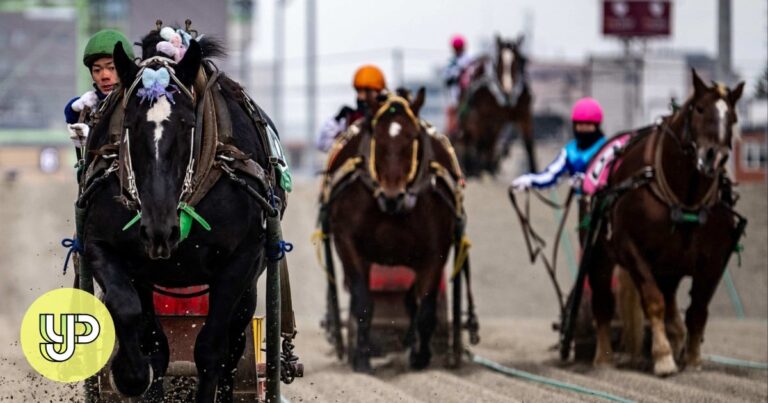In Japan, unique racetracks showcase the world's slowest horse racing, drawing fans looking to place bets on the leading favorites.
A fanfare sounds, the gate opens, and the train departs. However, in a tradition dating back more than a century, they walk slowly, rather than at a gallop, while pulling heavy sleds.
Ban'ei Horse Racing is held in Obihiro, Hokkaido, where spectators cheer on muscular horse-drawn carriages that move at the pace of a human trot.
Spectators watching a horse race where speed is not everything. Photo: AFP
On a recent afternoon, eight horse competitors kicked up dust as they powered through the first of two mounds on the 200-meter track.
But they soon began to stop, taking the first of several breaks to catch their breath in the swirling winter air.
Esther McCourt, a 24-year-old Australian tourist, said the slow progress “creates a bit of suspense” as she marveled at the horse's size.
“No matter how good a person or a horse looks at first, it's the last 50 meters that count, and that can change at any time,” she says.
Beijing's autistic children rescued by horses
Ban'ei Horse Racing's popularity had slumped until interest and new marketing efforts increased during the pandemic, when people started watching and betting on races online.
These casual gamblers and loyal fans have helped the event's annual revenue grow to 55.5 billion yen (US$375 million). This is a five-fold increase from his lowest point in 2011.
Banei horse racing developed as Japanese people moved to Hokkaido, a sparsely populated island that endures long, harsh winters.
After the banei horse race, the jockey leaves the racetrack. The event's popularity has increased during the Covid-19 pandemic. Photo: AFP
They relied on horses known as “bambas” to clear fields, transport supplies, operate mines, and compete against each other in tug-of-war games and other contests at local festivals.
Bambas weigh twice as much as racing thoroughbreds, and the sleds they pull can weigh more than 600 kg (1,300 lbs).
The jockey, standing on the sled, shouts loudly and cracks his whip to keep the horse moving with the long reins.
Trainers including Yoshiyuki Hattori deny the accusations of cruelty, insisting that strong animals are treated with care and are not forced to work harder than they are capable of.
Guinness World Records investigates allegations about the age of 'world's oldest dog' Bobi
“If thoroughbreds were bred to run, Bamba was bred to carry things,” Hattori says. His horses have won many trophies in races.
“They worked in the fields. They worked for us. We want to carry on this history.”
For Hattori, Ban'ei races are “more dynamic” than the “visual experience” of regular horse racing.
“This allows your body to move when you cheer,” he said.
Three other cities in the region once held similar races, but all were canceled in 2006 due to high debts.
At Obihiro Racecourse, people checking horse racing information from around the country are showing the Ban'ei horse racing on a monitor. Photo: AFP
Japan's long-slumping economy has had a big impact on Banei Horse Racing, and the regular customers who have supported horse racing are aging.
Obihiro Racecourse, now the sole custodian of this tradition, has sought to attract more young families and tourists by cleaning its facilities and banning smoking.
Marketing activities such as the installation of a mini zoo and tie-ups with popular smartphone games were carried out in an effort to revitalize the product's appeal.
Avoid hogging the table at Japan's latest trend in pig cafes
Currently, approximately 750 horses participate in races, managed by 28 trainers, 150 caretakers, and 21 jockeys.
Before the race, one of the managers, Yuno Goto (21), was busy attaching fluffy pale pink and blue ribbons to Bamba's mane.
She dreams of becoming a jockey one day and described the event as “a great opportunity to expose people to this culture and provide a different experience than other horse races.”
Approximately 750 horses participate in the Banei Horse Racing. Photo: AFP
Spectator Taichi Yamada, 27, who moved to the area last year, said knowing the origins of the race makes it even more appealing.
“This is a form of interaction between humans and animals. I hope it continues as part of history.”
“It must be hard for the horses to pull that much weight. I can't help but root for them.”


